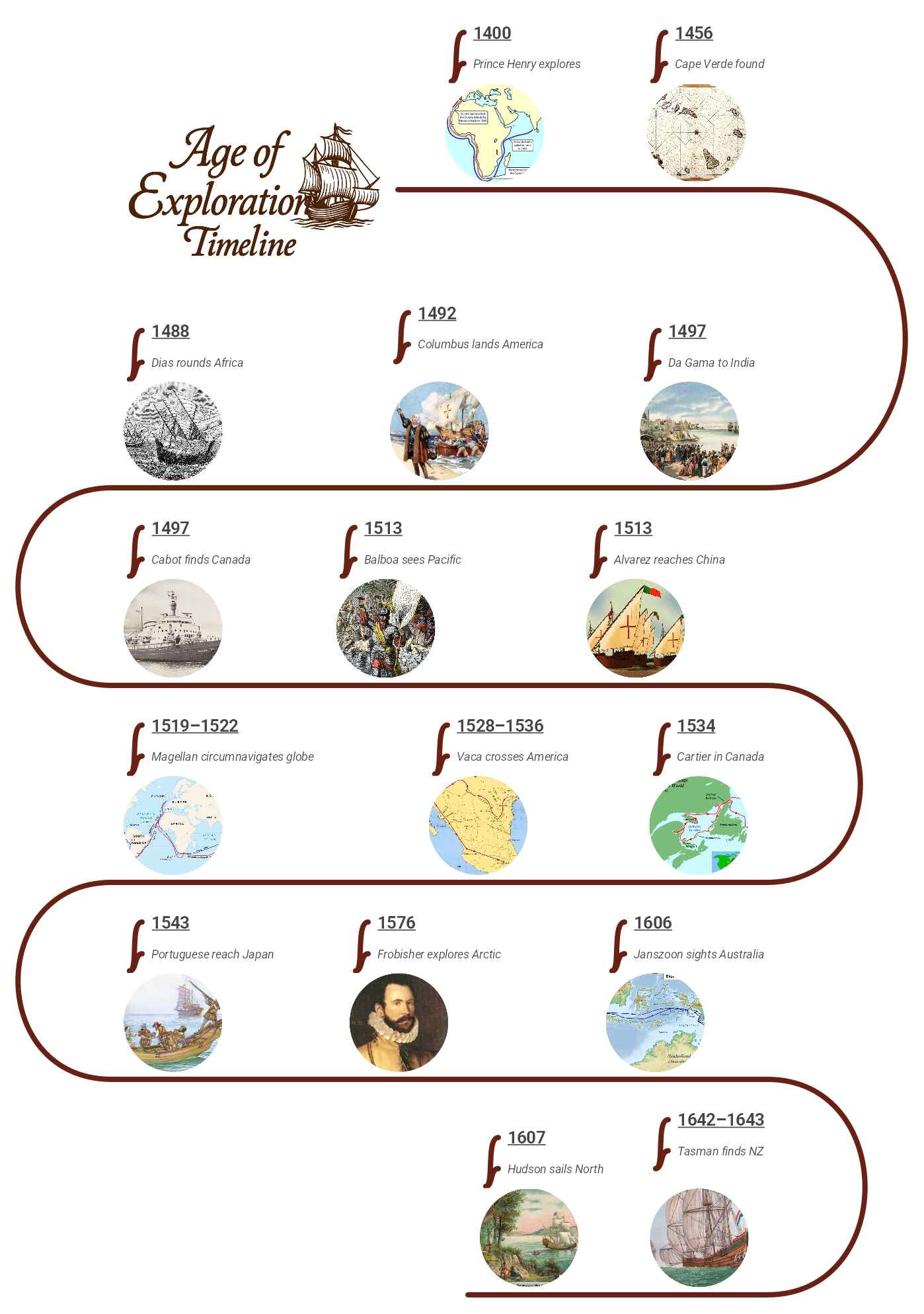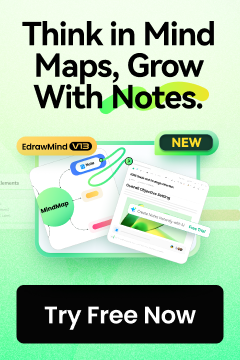In the 1400s, people in Europe were curious. What else was out there? They had heard stories about gold in Africa. Spices in India. And strange lands across the sea. But no one had maps. No one had proof. That’s when the Age of Exploration began. Prince Henry of Portugal, called “The Navigator,” helped lead the way. He sponsored trips along Africa’s coast. Bit by bit, explorers sailed into unknown waters.
In just 150 years, they reached Africa, Asia, the Americas, and even Australia. New trade routes opened. Cultures met and mixed. Empires grew. But the journeys had a dark side too. Slavery spread. Wars broke out. Colonization began.
It was a time of wonder and pain. This timeline shows the voyages that connected the world, for better or worse.
Better ships and new tools helped them travel farther. Sailors reached places they had never seen before. Let's look at the key events that shaped this exciting time in history.
In this article
Part 1: The Age of Exploration Timeline
The Age of Exploration, also called the Age of Discovery, began in the 1400s and lasted into the 1600s. During this time, European ships sailed across the world. Explorers were looking for gold, spices, land, and new trade routes. They also wanted to learn more about the world.
Better ships and new tools helped them travel farther. Sailors reached places they had never seen before. Let's look at the key events that shaped this exciting time in history.
1. 1400: Prince Henry Starts Exploring Africa (Portugal)
Let's start with Prince Henry of Portugal, also known as "Henry the Navigator." He wasn't a sailor, but he was full of curiosity. He heard stories about Africa: gold, spices, and even people being traded as slaves. That got his attention.
So, what did he do? He paid sailors to explore the coast of Africa. Bit by bit, they sailed farther south. They also learned how the Atlantic winds worked, which helped them return home safely. Thanks to Prince Henry, Portugal built one of the strongest exploration networks in the world.
2. 1456: The Portuguese Find Cape Verde
While sailing along the African coast, Portuguese sailors stumbled upon a group of empty islands. These were the Cape Verde Islands, and no one lived there at the time.
They realized these islands were in the perfect spot for ships to stop, rest, and resupply. By 1462, the Portuguese had built a permanent settlement. Cape Verde quickly became a key location in the trade of gold and slaves from Africa.
3. 1488: Dias Rounds the Tip of Africa
Bartolomeu Dias was a Portuguese explorer sent to find a sea route to India. Instead of going overland through the Middle East, they thought sailing around Africa might work.
Dias managed to sail to the southern tip of Africa, a place now called the Cape of Good Hope. He wanted to go further, but his crew was too scared. Still, he had proven it was possible—Europe could now dream of reaching Asia by sea.
4. 1492: Columbus "Finds" America (Spain)
Christopher Columbus believed he could reach Asia by sailing west instead of east. After asking many European kings and queens, Queen Isabella of Spain finally said yes.
He didn't find Asia, though—he landed in the Bahamas, America. He thought he had reached India and called the people there "Indians." He never realized he had found an entirely new continent! But his voyage opened the door to centuries of exploration.
5. 1497: Vasco da Gama Reaches India (Portugal)
After Dias proved you could go around Africa, Vasco da Gama finished the job. He sailed to India, and it was a big deal.
India was rich with spices and treasures Europeans had only dreamed of. Da Gama's trip changed global trade forever. It gave Portugal direct access to Asian markets and ended Muslim control over the spice trade.
6. 1497: John Cabot Finds Canada (England)
John Cabot sailed from England, hoping to find a new way to Asia by going north. Instead, he landed on the coast of Canada, Newfoundland, to be exact.
He wasn't the first European to set foot there (the Vikings beat him by centuries), but he was the first in a long time. Cabot's discovery got England interested in exploring the New World.
7. 1513: Balboa Sees the Pacific Ocean (Spain)
Vasco Núñez de Balboa heard rumors of gold on the other side of Panama. So he crossed mountains, fought tribes, and marched through the jungle with a group of men.
After a brutal journey, he made it to the other side—and saw a massive ocean! He called it the South Sea (we now know it as the Pacific) and claimed it for Spain.
8. 1513: Jorge Alvarez Reaches China (Portugal)
Jorge Alvarez, sailing for Portugal, started his journey from a port in Southeast Asia. He eventually reached China, though it took a second expedition to actually start trade.
It was the beginning of a long and complicated relationship between Europe and China. Portugal had reached one of the richest civilizations on Earth.
9. 1519-1522: Magellan's Ship Sails Around the World (Spain)
Ferdinand Magellan set out to find a western sea route to Asia. He sailed around South America and into the Pacific Ocean. It was a long, hard journey.
Magellan was killed in the Philippines, but one of his ships made it all the way back to Spain. It was the first time in history that anyone had sailed all the way around the globe!
10. 1528-1536: Cabeza de Vaca Walks Across North America (Spain)
Cabeza de Vaca was supposed to explore Florida, but things went badly. The expedition was hit by storms and native attacks. Most of the crew died, including the leader.
De Vaca survived and wandered through the American Southwest for eight years. He learned native languages, acted as a healer, and finally made it to Mexico. His journey gave Europe one of the first looks at the interior of North America.
11. 1534: Jacques Cartier Explores Canada (France)
France sent Jacques Cartier to find a sea route to Asia. Instead, he explored the Gulf of Saint Lawrence and the Saint Lawrence River in Canada.
He met native people, mapped the area, and called it "Canada." He thought that was the name of the place, but it was actually a native word for "village." Oops!
12. 1543: Portuguese Sailors Accidentally Reach Japan
One day, a storm blew Portuguese sailor António Mota off course. He landed on the shores of Japan - a total accident!
Later that year, another explorer, Fernão Mendes Pinto, reached Japan on purpose. That was the start of European trade and contact with Japan.
13. 1576: Martin Frobisher Searches the Arctic (England)
England was still looking for that shortcut to Asia. Martin Frobisher sailed north and discovered places like Baffin Island and Frobisher Bay.
He thought he had found gold, but it turned out to be worthless rock. Still, he played a role in mapping the cold northern parts of Canada.
14. 1606: Willem Janszoon Sees Australia (Netherlands)
Willem Janszoon was looking for new islands to trade with. He ended up landing on the northern coast of Australia—but didn't realize it was a new continent!
Later, he explored the west coast too and thought it was a totally different island. He never figured out both landings were part of one huge place - Australia.
15. 1607: Henry Hudson Explores the North (England)
Henry Hudson was also on the hunt for the Northwest Passage to Asia. Instead, he explored parts of Greenland, the Hudson River, and Hudson Bay.
On his last trip, things got rough. His crew mutinied and left him, his son, and a few others adrift in a small boat. They were never seen again.
16. 1642-1643: Abel Tasman Finds Tasmania and New Zealand (Netherlands)
Abel Tasman was sent to explore the ocean east of Australia. He ended up discovering Tasmania (named after him), New Zealand, and even the Fiji and Tonga islands.
His voyages showed just how massive and unexplored the Pacific really was. The Dutch were now deep in the game of global exploration.
Part 2: How to Make the Age of Exploration Timeline using EdrawMind?
The Age of Exploration can be complicated to understand, but did you know that making its timeline is quite simple? EdrawMind offers easy-to-use customization options and AI tools to create detailed and visually pleasing timelines.
Let's take a look at the process of making the Age of Exploration timeline with EdrawMind:
Step 1: Sign in & Create a New File
- Launch EdrawMind and sign in with a new Wondershare account or use your socials to log in.
- You can also try EdrawMind online on your browser.
- Click the New Mindmap button at the homescreen with the + icon to get started.
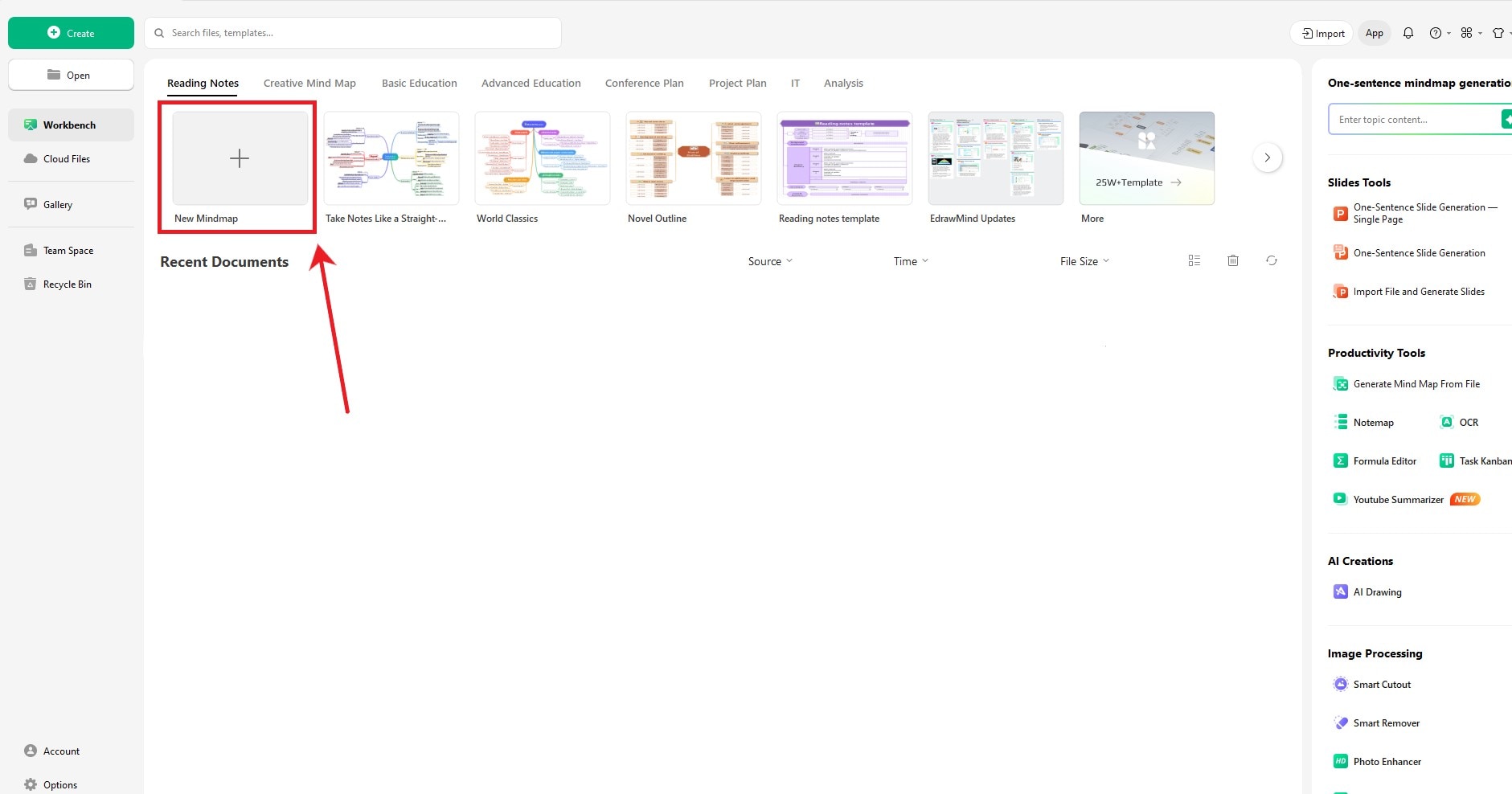
Step 2: Change the Layout
- Select the Main Idea and click Layout from the floating menu.
- Pick Timeline (S-shape) from the list to switch to the layout.
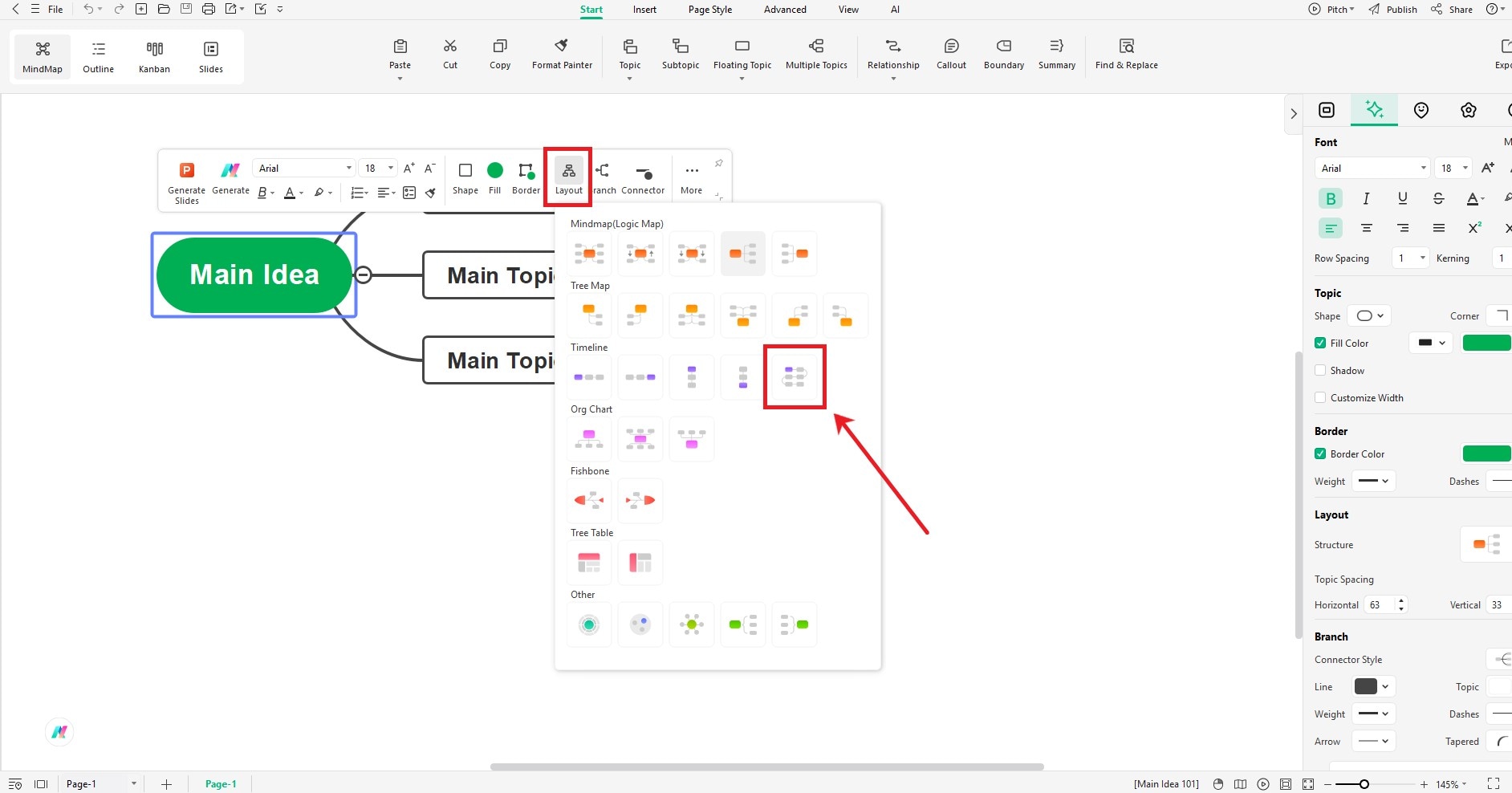
Step 3: Expand the Timeline
- Select the Main Idea and click Topic from the top menu bar to add a new entry.
- Similarly, add as many topics as you need for the timeline.
- Select a Main Topic and click Subtopic from the top menu bar.
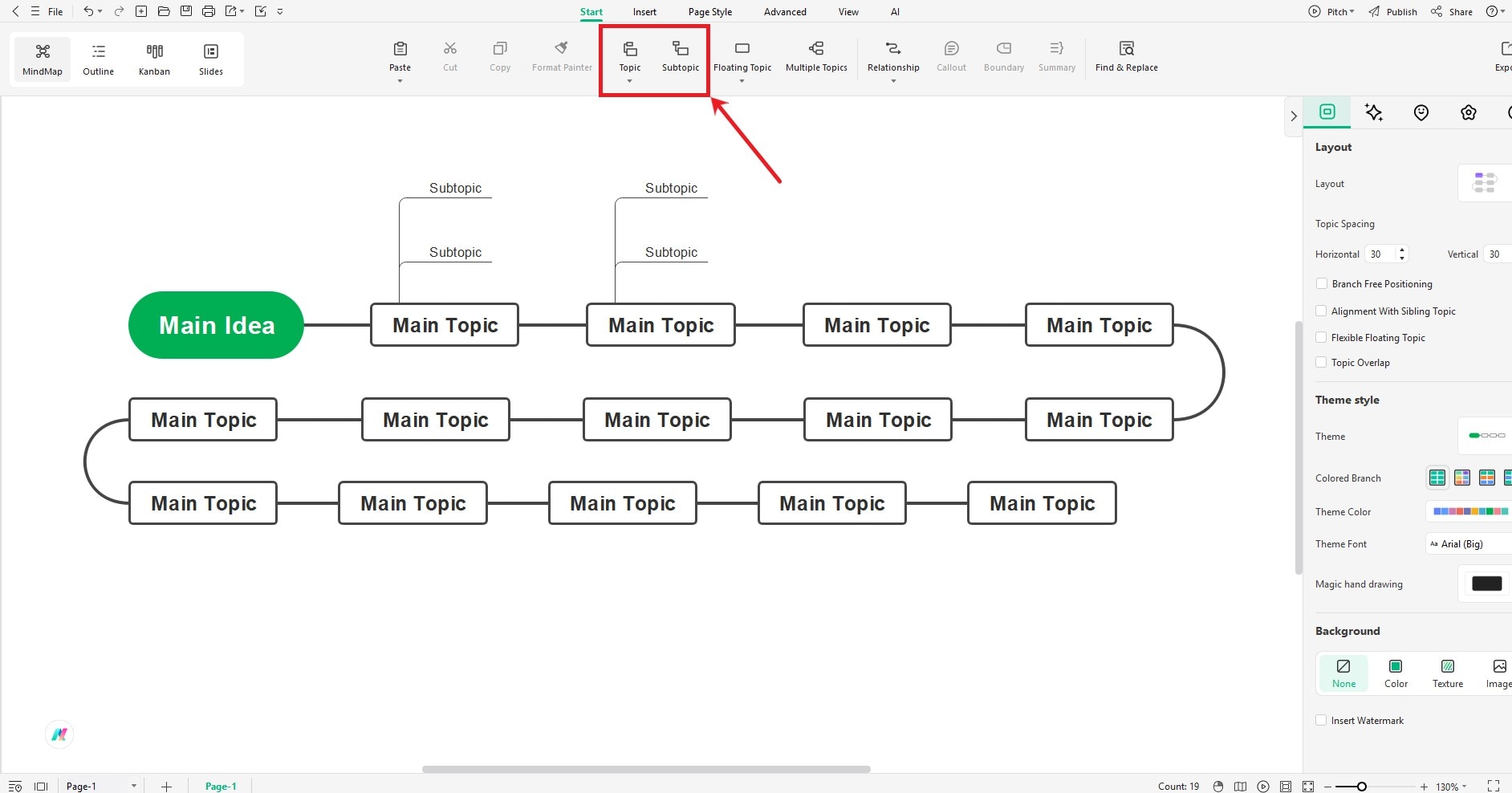
Step 4: Customize the Timeline
- Select a topic and use the floating menu bar to customize its color, shape, style, border, and branch settings.
- Let's add text. Click any topic and start typing to remove its placeholder text and enter new content. Use the right toolbar and the floating menu to customize font settings.
- Pro-tip: You can also select multiple topics or even the entire timeline and customize it at once.
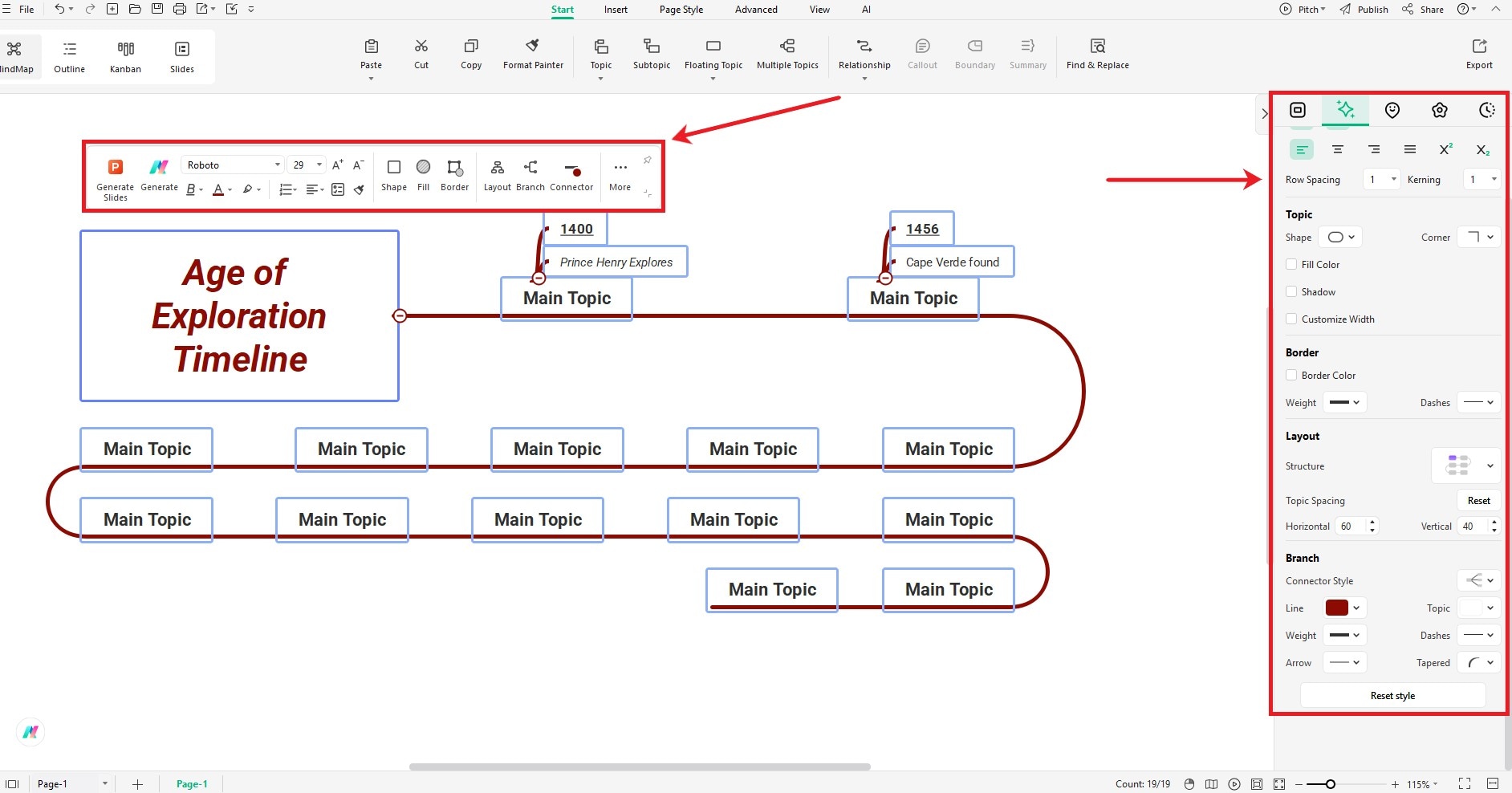
Step 5: Insert Images
- Copy and paste an image into the EdrawMind workspace.
- Drag and drop the picture into a topic.
- Select it and use the floating menu and the right toolbar to change its settings.
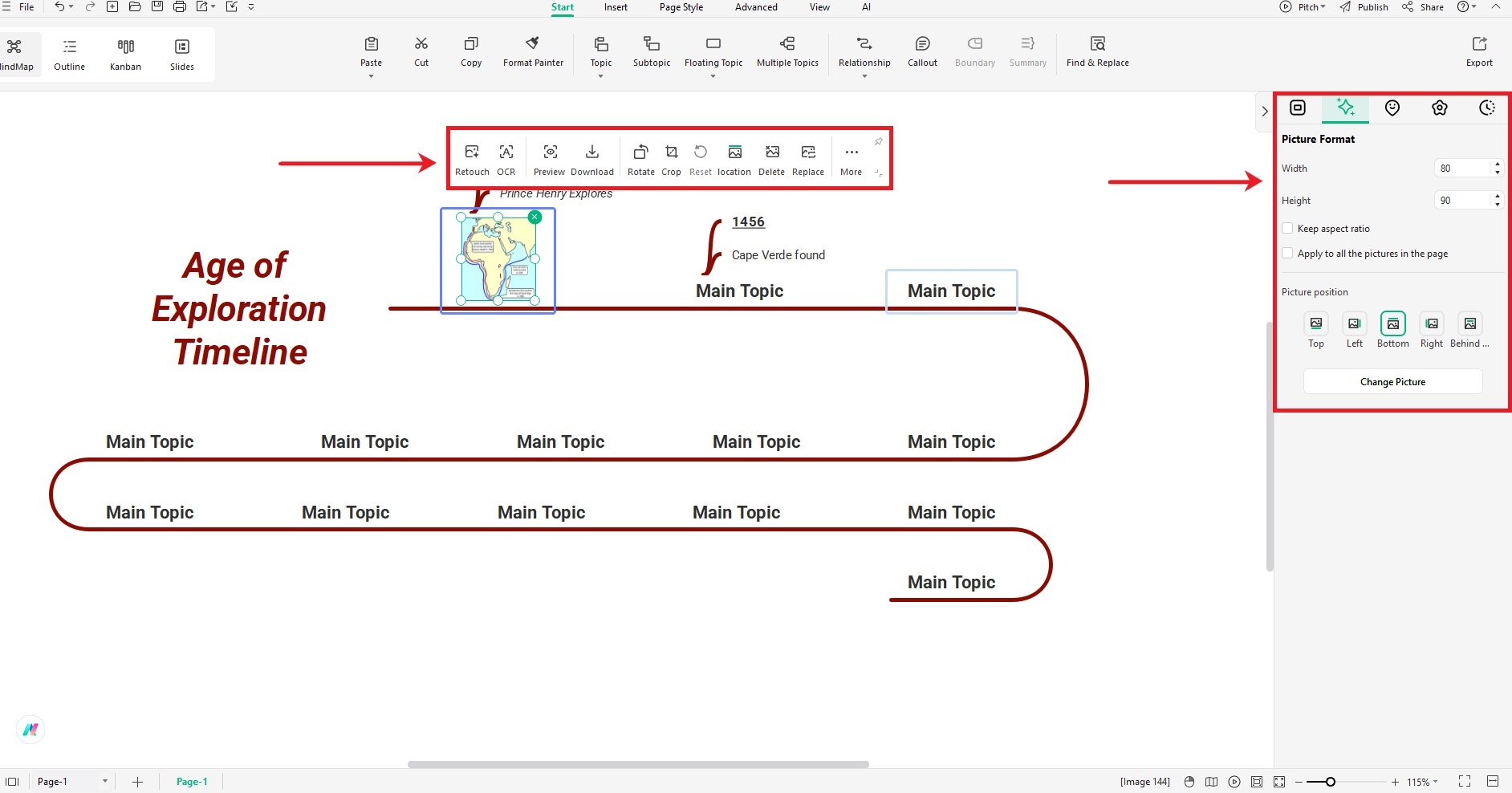
Step 6: Finalize & Save
- Finalize everything before saving.
- Click the File button with the hamburger menu icon.
- Select Save from the drop-down menu to download the file to your device.
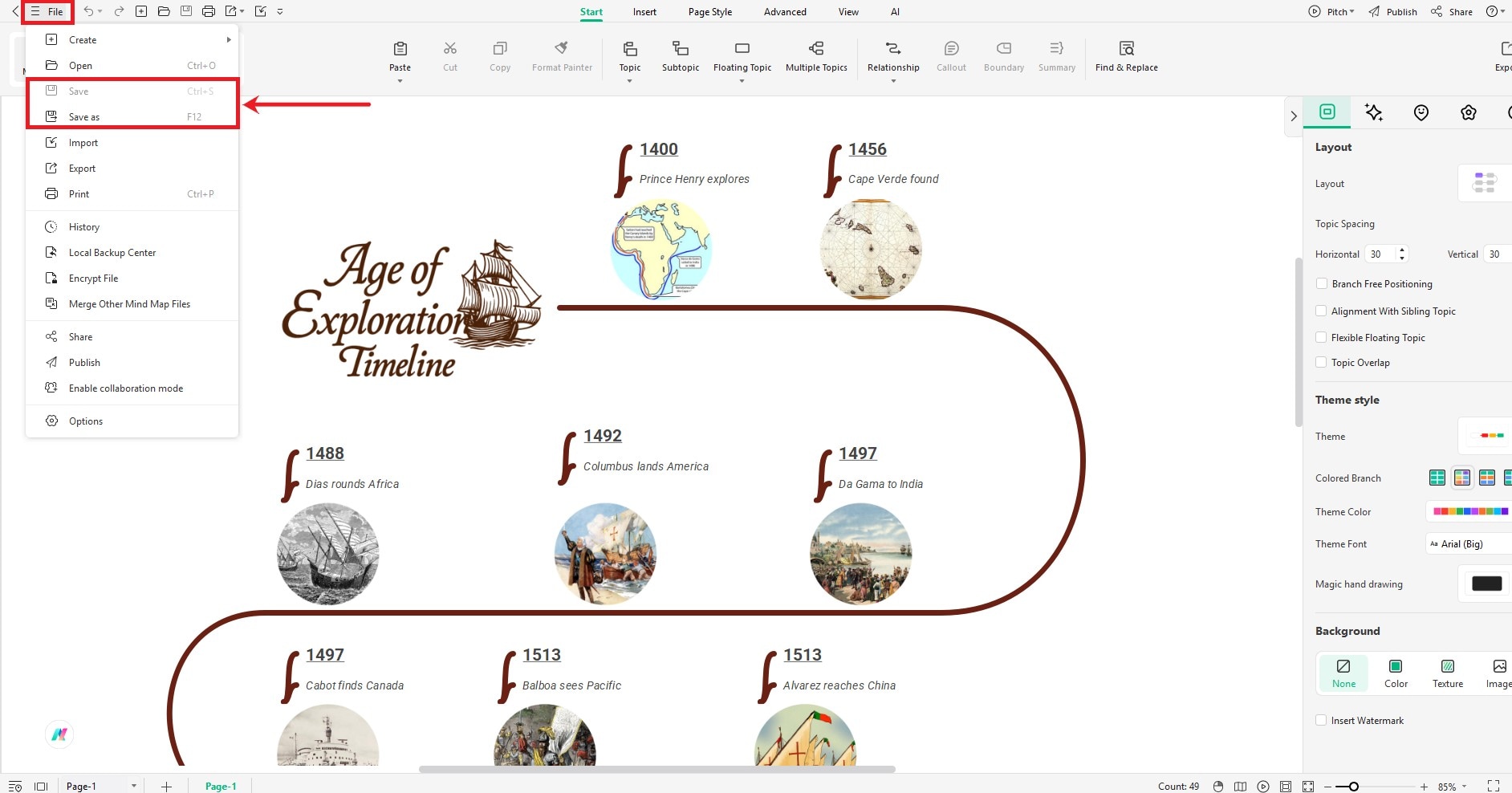
Closure
The Age of Exploration was full of daring journeys and big discoveries. Explorers found new lands, sea routes, and treasures. They changed maps and made the world feel smaller. From Prince Henry's early voyages to Tasman's Pacific travels, each trip added something new. It was an age of wonder—and risk.
But exploration also brought hardship. It led to colonization, slavery, and conflict. Still, it shaped our modern world in powerful ways. Want to trace these key moments in order? Make your own Age of Exploration Timeline with EdrawMind. It's easy, fun, and a great way to bring history to life for kids and curious minds alike.



